Veles pear variety
Velesa is a pear variety with fruits of the autumn ripening period. Also known as "The Excellent Daughter." Obtained at the All-Russian Institute of Selection and Technology of Horticulture and Nursery (abbreviated VSTISP, Moscow) through crossing of 2 varieties - Venus x Forest beauty... The authorship is assigned to Yu. A. Petrov and N. V. Efimova. Veles is most often found in the gardens of the Moscow and neighboring regions. In 2001, the variety was added to the State Register.
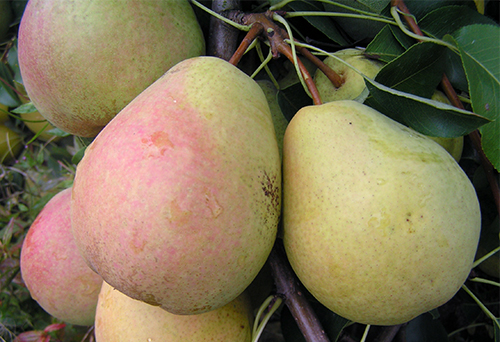
Trees are medium-sized. At a young age, the crown has a spreading shape, but later becomes wide-pyramidal; foliage thickening is average. The main branches are very thick and long, curved in shape. The fruiting type is ringed. The ringlets themselves are rather large, and are evenly distributed on the branches.
Shoots of medium size, thick, brownish brown. Leaves are medium in size, with a smooth surface, dark green in color, the edges are wave-like curved, with finely serrated serration. Petioles are thin, long. Stipules are lanceolate.
Fruits are of medium and larger size, the mass of one pear is usually 150 - 180 g, the largest specimens reach 200 g. In shape, the fruits are broad-pear-shaped, symmetrical, and not ribbed. On the surface of the fruit, the skin is even, clean and smooth. The main color is greenish-yellow, the integumentary color is expressed as a light reddish tan. The stalks are medium in thickness, long, slightly curved. The calyces are of medium size, closed type (above the short subasculum tube), the sepals are medium. Seed chambers of a closed type. Seeds are medium in size, dark brown in color. The axial cavity is narrow in shape, there is no connection with the pump tube.
The pulp has a creamy hue, medium density, semi-oily structure. In general, Veles pears have excellent taste - juicy, tender, sour-sweet. Since the fruits of the dessert type (they are not inferior to the best southern varieties in taste), they usually disperse fresh, but they are also suitable for various homemade preparations.
Fruit ripening occurs in the autumn. And although all the pears on the tree ripen at the same time, it is still recommended to harvest in 2 passes, starting with the largest fruits: the first harvest - at the end of August (on the 20th) or early September, taking into account the weather conditions; the second collection is closer to mid-September. You should not wait for full ripening: it is better to pick pears slightly unripe (with a greenish skin and a slight yellowish tinge), since in this case the periods of storage and consumption are advantageously extended. In the refrigerator, the fruits remain fresh until mid-November.
The early maturity of the variety is low, fruiting begins at 5 - 7 years (from the year of growth in a nursery). The crops are characterized by abundance and regularity. Winter hardiness is at a high level (not lower than the level of old average Russian varieties). Resistance to fungal diseases is high.
Among the main advantages of the Veles pear are: high environmental sustainability, regular fruiting, high yield, high commodity and consumer characteristics of fruits, high scab resistance.
The disadvantages include: a tendency to shrinkage of fruits with abundant harvests, as well as on old trees in the absence of regular pruning; rather late entry of trees into the season of fruiting, the tendency of flower buds to freeze.
This variety is of value for industrial and home cultivation. Also interesting for breeding work.
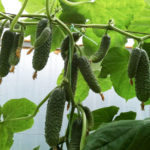
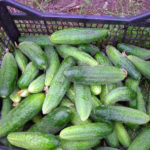
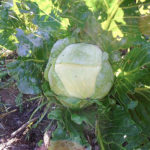

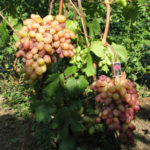
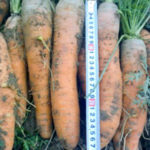



The pear is the fourth year - it bloomed with two bouquets. 6 fruits were set, three each. On September 5, still greenish fruits were plucked (there were two left in bouquets) - three fruits of 200 grams each, and one - 260 grams. On September 9 we tasted - fabulous fruits !!! I haven't tried it better - I have four more pears. I recommend! I endured the bad winter of 2014 perfectly.
It also bloomed for me in this 2015th year. I planted her in my place in 2012.Ie. for the 4th year. But no fruit was set, tk. I still have one pear. It turns out that Veles needs a pollinator. I will wait until they gain strength and the grafts in the crown bloom.
We sell "Veles" or "Veles" (?) Dzerzhinsky (Minsk region) breeding. Is it worth taking, and will another pear be a pollinator? The tree was interested. Very much. But what I saw on sale was almost dead. I did not dare ...
Will it grow in the north of the Moscow region? The city of Sergiev Posad.
In our region, this variety feels great. For those who do not know, the Yaroslavl Region is located next to the Moscow Region. Veles independently overcomes the disease - bacterial burn. Which is manifested by blackening of leaves and branches. But if after a tree disease there is a harsh winter, then the pear will die. Therefore, while the pear is young, I spray it with Horus. I spray it twice a season, with an interval of 10 days. I spray in the evening on a green crown. I try to spray the leaves on both sides. The drug is absorbed by the leaves into the tree. Protecting it for 7 to 10 days. You cannot spray more than two times, because will be addictive. This is a pesticide, so you cannot eat pears and what grows under them for 2 months.
The variety is good, but only for grafting in the crown.
A separate tree in the Middle Lane will freeze from time to time.
My Veles is 15 years old. Fruited for 7 years. Every year with a harvest. The fruiting period is extended for a month. Winters very well. Awesome pear. I recommend to everyone. Site of Venev town northeast of Tula region, 60 km south of Kashira
I have a pear of 14 years old, blossomed at the age of 7, she was alone at that time. The fruits are quite large, pruning is needed, otherwise there will be a lot of fruits and they become smaller. The fruits ripen in late August to late September The dacha is located in the Leningrad region. border with the Volosovsky district. The pear never froze, covered the first year, bought a one-year-old. The taste is not bad, it does not get sick, the variety would be recommended for growing in our climate. In addition to Veles, the Vilmos variety grows nearby, it is very tasty, but susceptible to diseases.